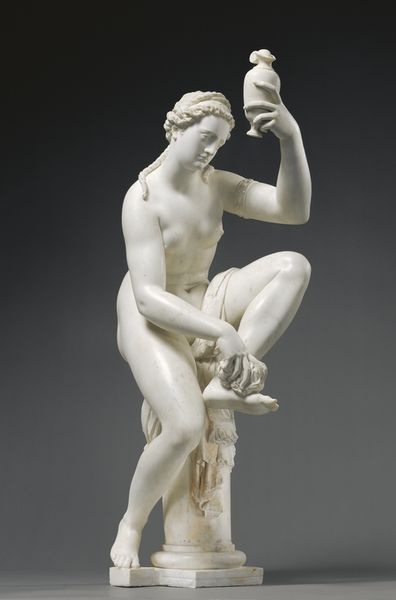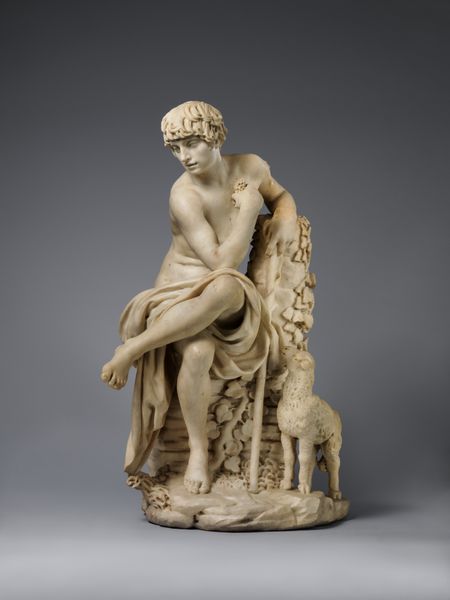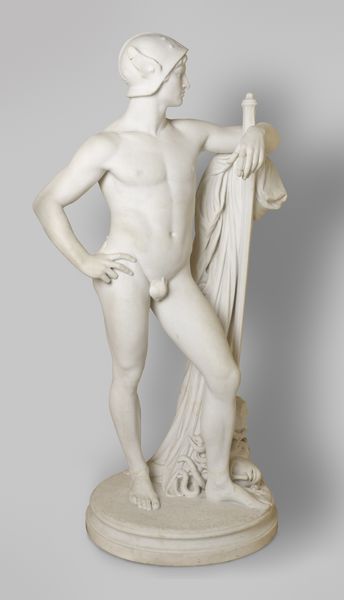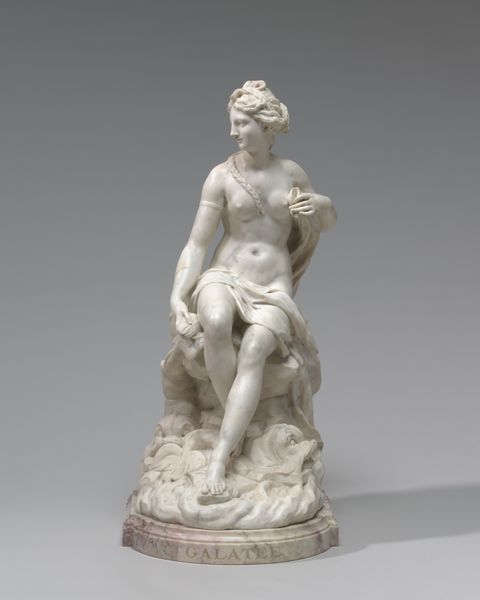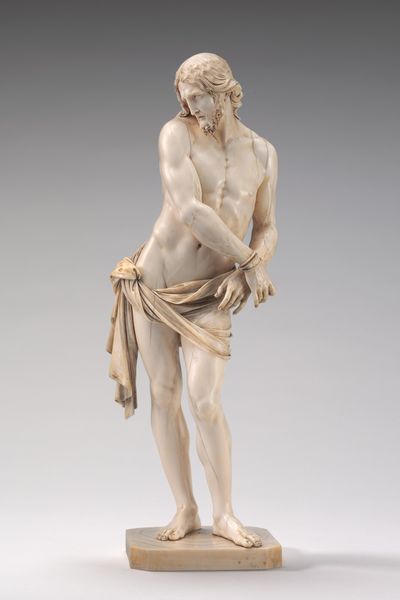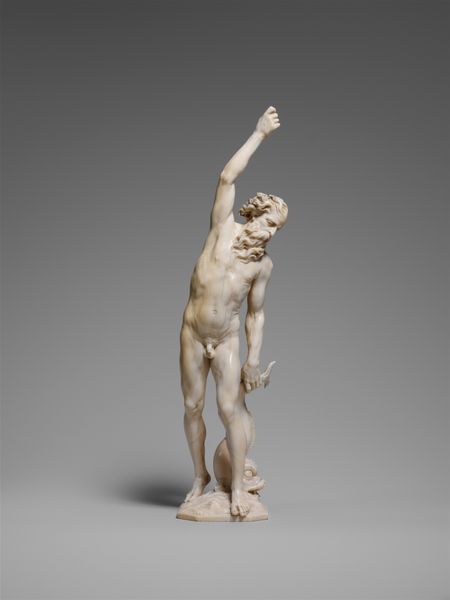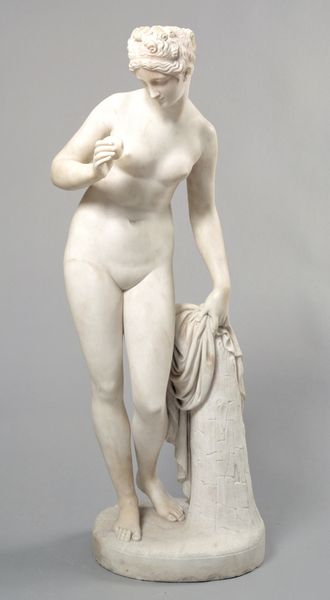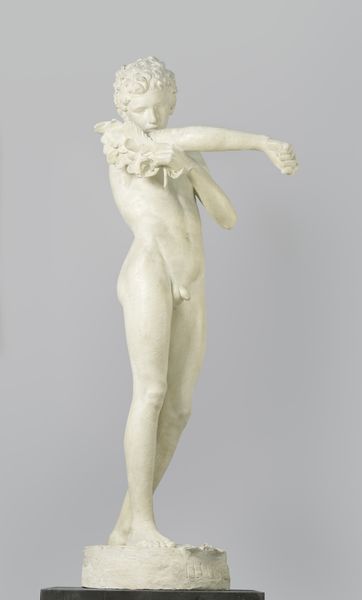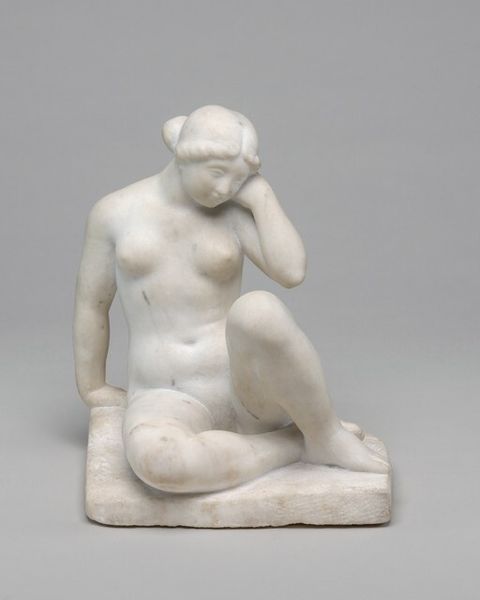
sculpture, marble
#
portrait
#
neoclacissism
#
sculpture
#
figuration
#
sculpture
#
history-painting
#
marble
#
male-nude
#
realism
#
statue
Dimensions: 57 1/2 x 19 x 16 in. (146.1 x 48.3 x 40.6 cm)
Copyright: Public Domain
Hiram Powers carved this marble sculpture, *Fisher Boy*, during the mid-nineteenth century, when European and American artists commonly looked to classical antiquity for inspiration. The figure’s nudity and idealized form evoke ancient Greek sculpture. But rather than portraying a god or hero, Powers depicts a simple, anonymous boy. During this period, some American sculptors sought to create a distinctly American art, free from European influence. They often turned to ordinary people, and especially to enslaved people and indigenous peoples, as subjects for their work. Powers lived and worked in Italy, where he was part of a community of American expatriate artists. Many of these artists made sculptures of enslaved people, which were then sold to abolitionists in the United States as a form of political protest. To understand the complex social and political context of this sculpture, scholars often research period documents, such as letters, diaries, newspapers, and exhibition reviews. Art is always a product of its time and place.
Comments
No comments
Be the first to comment and join the conversation on the ultimate creative platform.



